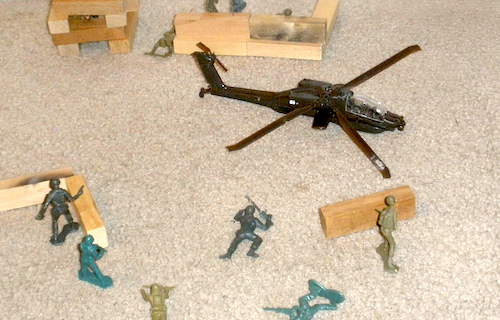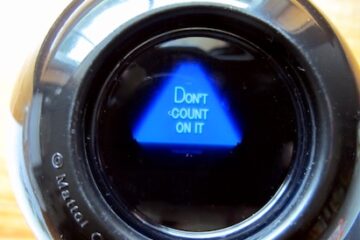What do a 7-year-old, a slice of cake, and a self-destructive project manager have to do with being a better leader?
Sometimes hindsight allows us to connect completely unrelated events to each other in a way that reinforces a singular lesson. This post is about such a situation.
All three of these stories are true, and they are completely unrelated, bound together only by the common lessons they illustrate.
Story 1: The highly effective, self-destructive project manager
Francois (not his real name) was a fantastic project manager.
I was developing an enterprise web app for a huge company, and Francois handled all the non-app details—navigating bureaucracy, getting approvals, scheduling the rollout, planning with QA—a real hero for me and my project.
In private, however, he frequently complained to me about our colleagues: Chris never answered emails. Alice always missed deadlines. Mark ignored critical details. George was stuck in outdated thinking.
As a result, Francois spent much of his time frustrated and distrusting others. When we first started working together, he’d been diplomatic and collaborative, but over time he became more impatient and demanding.
By the time we worked on our third project together, he had begun assuming the worst of others from the outset. He lost his collaborative approach and became aggressive and even sometimes combative with people whose support we relied on.
All this time he kept venting to me about how everyone else ignored his emails, denied his requests, and missed deadlines… and I never pushed back on his negative talk.
Until I did.
But I’ll get back to Francois in a moment.
Story 2: Cake exposes cultural bias
A client told me this story about when she was in her 20s. She was new in the United States, with passable but limited English, having recently moved into an apartment building.
Her neighbors, a family with children, invited her over for dinner. It was pleasant… until dessert.
The host cut a slice of a delicious-looking cake and handed it to her. She passed it along to one of the children. The host seemed surprised. He cut a larger slice and handed it to her. She again passed it along.
This happened several times. Each time he cut a slightly larger piece, and each time she passed it along, until she ended up with the largest slice at the end.
My client had a feeling that she’d offended her host, but she had no idea how. And she was mortified about it.
It wasn’t until days later that she built up the courage to say something to him. They talked it over, cleared things up, and laughed over their misunderstanding.
The host had been raised to appear generous. He always served the guest first and made sure no one in the family ended up with more than the guest. He assumed that would always make the guest feel honored and respected.
My client, however, had been raised to be an undemanding and grateful guest. She had been taught to avoid looking selfish and make sure the hosts had all they needed before she took any. She assumed that would always make the host feel honored and respected.
What resulted from their clash of cultural biases was not just a misunderstanding, but also a shared inability to talk about it in the moment. For each, playing their roles as generous host and grateful guest also meant not drawing attention to the fact that they were playing those roles.
It’s not generosity if you crow about how much you give away. It’s not gratitude if you make sure everyone knows about your sacrifice.
So they both assumed the other was behaving in an offensive way and did not understand how their own behavior was offending the other.
Story 3: The 7-year-old and the plastic army men
One Sunday morning, I found my 7-year-old playing alone in his bedroom.
He had arranged two groups of plastic toy army men in an epic, complex, battle ranging from his bed to his dresser to the windows and even the closet.

I watched as he maneuvered them. Back and forth. Gains and losses. Artillery, air strikes, rescue missions. It seemed an even matchup.
After a few minutes I asked, “Who are the good guys? The gray ones or the green ones?”
He paused. Then he explained that the gray ones thought the gray army were the good guys, but the green ones thought the green army were the good guys.
Then he went back to orchestrating the battle.
There was no story behind the battle. No fortune, power, or political reason for it. It existed as its own story. Gray versus Green. Eventually one would win and one would lose.
And even though virtually all the stories he’d encountered in his short life were based on heroes versus villains, in setting up opposing sides he somehow understood and articulated the concept of moral relativism.
This post isn’t actually about moral relativism. It’s not about defining good and bad, or identifying right and wrong. And it’s definitely not about war or parenting.
This post is about how no one ever sees themself as the bad guy.
We should use that fact to be better leaders.
Triangulating these stories into a leadership lesson
You might see several things that tie these stories together, but for me there’s one thread that’s most relevant:
These stories all center on how people can get into a self-destructive spiral when they’re unable to see from other perspectives.
With the cake, my client kept following the rule she knew, as did her host. Instead of making everyone feel honored and respected, it created tension.
My son’s two toy armies were fighting a battle where each saw themselves as the good guys. Rarely do wars start from a single incident; more often, they are the culmination of a long series of division, entrenchment, and blame where each side either fails or refuses to see the others’ perspective.
Francois’ complaints about others became self-fulfilling. As he grew more cynical, he became more demanding and they became less responsive… which fueled his cynicism in a negative spiral.
The good news is, even in the middle of a negative spiral, you can get yourself off and back on a positive trend.
What happened with Francois
For a long time, I thought I was helping Francois by listening sympathetically as he complained about our coworkers.
Then one day I asked what else could be true. I don’t remember the exact thing I said, but I do remember the effect it had on Francois. I simply suggested that a coworker hadn’t replied yet because he was busy working on an urgent project for one of the other managers he supported in his role.
That was it. It seems ridiculously simple telling it now, but I very clearly remember Francois pausing and thinking.
Then he allowed for the possibility that I was right. And he even named the other project that might be taking up our coworker’s time.
“So you think I should wait a couple days before following up?” He asked.
I told Francois that yes, I thought a bit of patience was appropriate.
The coworker got back to Francois later that day with the answer we needed, along with an apology that explained he had been called in to fix an emergency production issue.
Over time, Francois checked in with me more and more on questions like this. The negative talk eventually disappeared. He returned to his collaborative style and repaired his frayed relationships with colleagues.
Two lessons to take from this post to improve your own leadership
The first and most obvious lesson you should have learned from this post by now is that good leaders always ask, “What else could be true?”
Good leaders aim for extreme self-awareness. This means trying to find other perspectives in order to ferret out your own biases and identify your own blind spots. What are you not seeing? What perspective, cultural or personal bias, or escalated tension might someone else be experiencing?
Although it’s not a difficult thing to pause a moment, take a breath, and broaden your thinking, it does take practice, effort, and intention. This skill set is something professional coaches like me help leaders develop and hone.
The second lesson is that leaders need to check themselves regularly with trusted advisors.
Once Francois was aware he was partly to blame for his own negativity, he checked in with me—and sometimes others—for honest feedback and advice.
As a leader, you need to develop your own set of people you can check yourself against whom you trust to expand your perspective. Often a colleague or a friend can play this role. Often it’s better to have a neutral, unbiased third party like a professional coach. This is why Bill Gates and Eric Schmidt say everyone needs a coach.
It’s important to remember that even though you’re in charge and everyone expects you to have all the answers, you’re still only human. Which means your perspective is limited by your own biases and blind spots. You can’t help it. All humans experience it.
The very best leaders are the ones who can recognize, name, and account for their own biases and blind spots.
How often have you worked with someone you thought would be a fantastic leader if they could only get out of their own way?
I’ve worked with lots of them. I’ve been that person from time to time.
I’m pretty sure you have, too.
I can help.
I work with top executives and middle managers to improve their leadership skills and the effectiveness of their teams. I also help individuals identify and achieve their personal goals. How would you like to be better, be more resilient, or prepare for the next step?
You can help.
Think of one person who would benefit from reading this post. Sharing is caring! Forward it to them right now. They will think you’re super smart and well informed.




0 Comments